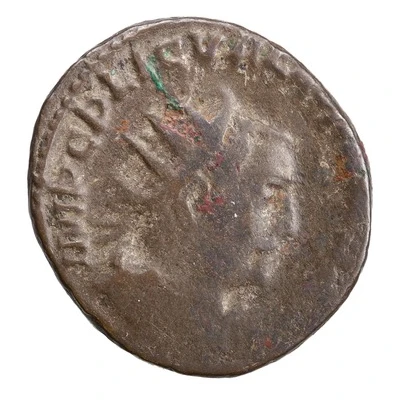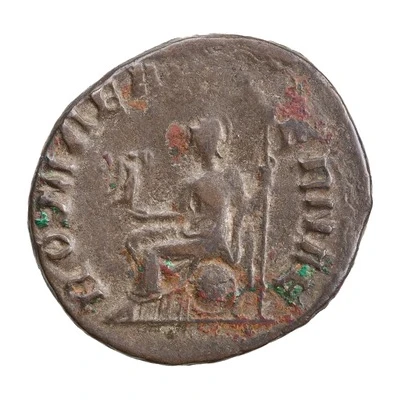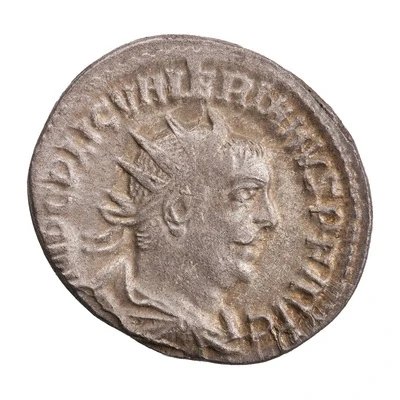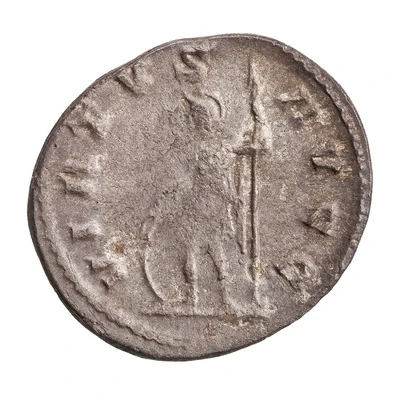


© American Numismatic Society (ANS)
Antoninianus - Valerianus ROMAE AETERNAE; Roma
| Silver | 3.7 g | 20.5 mm |
| Issuer | Rome › Roman Empire (27 BC - 395 AD) |
|---|---|
| Emperor | Valerian (Publius Licinius Valerianus) (253-260) Gallienus (Publius Licinius Egnatius Gallienus) (253-268) |
| Type | Standard circulation coin |
| Years | 256-255 |
| Value | Antoninianus (1) |
| Currency | Antoninianus, Reform of Caracalla (AD 215 – 301) |
| Composition | Silver |
| Weight | 3.7 g |
| Diameter | 20.5 mm |
| Shape | Round (irregular) |
| Technique | Hammered |
| Demonetized | Yes |
| Updated | 2024-10-05 |
| Numista | N#286128 |
|---|---|
| Rarity index | 95% |
Reverse
Roma, helmeted, draped, seated left on shield, holding Victory in right hand and spear in left hand.
Script: Latin
Lettering: ROMAE AETERNAE
Translation:
Romae Aeternae.
Everlasting Rome.
Comment
Example of this type:American Numismatic Society (ANS)
Source:
Online Coins of the Roman Empire (OCRE)
Interesting fact
The Antoninianus coin was issued during the reign of Valerianus, who was the Roman Emperor from 253 to 260 AD. During his reign, the Roman Empire was facing numerous challenges, including invasions by barbarian tribes and economic instability. Despite these challenges, the Antoninianus coin remained a popular form of currency and was widely used throughout the empire. It's interesting to note that the coin's design features the image of Roma, the personification of Rome, on the obverse (front side), and the emperor Valerianus on the reverse (back side). This design was a common feature of Roman coins during this period, as it was meant to symbolize the connection between the emperor and the city of Rome. Overall, the Antoninianus coin is a fascinating piece of history that provides insight into the economic and political climate of the Roman Empire during the 3rd century AD.

